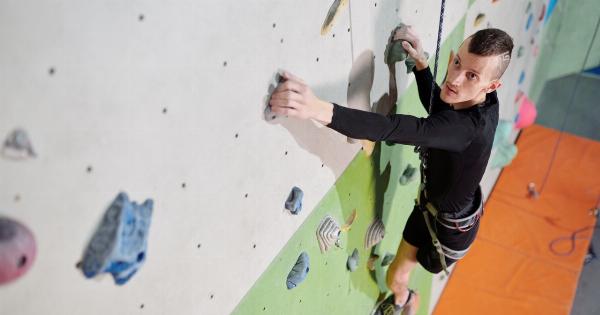Insomnia, the persistent difficulty falling asleep or staying asleep, affects millions of individuals worldwide.
While factors such as stress, lifestyle, and medical conditions contribute to insomnia, recent research suggests that genetics may play a crucial role in predisposing individuals to this sleep disorder. The notion that insomnia runs in families has opened up new avenues of research, enabling scientists to dive deeper into the genetic underpinnings of this debilitating condition.
Understanding Insomnia: A Brief Overview
Insomnia is a complex sleep disorder characterized by various symptoms, including difficulty initiating sleep, waking up frequently during the night, and experiencing non-restorative, poor-quality sleep.
It can lead to daytime drowsiness, reduced cognitive functioning, mood disturbances, and impaired overall quality of life.
According to the American Academy of Sleep Medicine (AASM), insomnia can be classified into three categories:.
1. Acute Insomnia
This type of insomnia lasts for a short duration and is often triggered by stressful events, such as life changes, emotional difficulties, or illness.
Acute insomnia usually resolves without medical intervention once the underlying stressors are addressed.
2. Chronic Insomnia
Chronic insomnia is diagnosed when individuals experience sleep difficulties at least three nights per week for a duration of three months or longer.
It can stem from a variety of factors, including medical conditions, psychiatric disorders, substance use, and poor sleep hygiene.
3. Comorbid Insomnia
Comorbid insomnia refers to cases in which individuals experience insomnia alongside another medical or psychiatric condition. Conditions like chronic pain, depression, anxiety, and sleep apnea can contribute to comorbid insomnia.
The Genetic Component: Familial Patterns and Twin Studies
The familial aggregation of insomnia has long intrigued researchers, indicating the potential involvement of genetic factors in its development.
Several studies have explored the heritability of insomnia using family-based approaches as well as twin studies.
A family-based study conducted by researchers at the University of California, Berkeley, analyzed the sleep patterns of over 500 individuals and found that the prevalence of insomnia was significantly higher among first-degree relatives (parents, siblings) of individuals with insomnia compared to the general population. These findings suggest the existence of shared genetic factors underlying insomnia.
Twin studies have also provided valuable insights into the genetic influences on insomnia.
In a classic twin study from the University of Washington, researchers found a higher concordance rate for insomnia in monozygotic (identical) twins compared to dizygotic (fraternal) twins. This indicates a substantial genetic basis for insomnia susceptibility.
The Role of Genes: Candidate Genes and Genome-Wide Association Studies
To identify specific genes associated with insomnia, researchers have turned to candidate gene studies and genome-wide association studies (GWAS).
Candidate gene studies focus on specific genes known to play a role in sleep regulation, circadian rhythm, and neurotransmitter function.
Genes involved in the expression of GABA receptors, melatonin receptors, and serotonin receptors have been of particular interest. However, these studies have yielded inconsistent and inconclusive results, highlighting the complex nature of genetic influences on insomnia.
More recently, GWAS have shed light on the genetic variants associated with insomnia. These studies investigate the entire genome in search of genetic markers linked to a particular phenotype, in this case, insomnia.
Large-scale GWAS have identified several genes related to sleep regulation, neuronal excitability, and stress response that show significant associations with insomnia.
Epigenetics: The Interplay Between Genes and Environment
While genetic factors contribute to the susceptibility to insomnia, the interplay between genes and the environment is equally important.
Epigenetic mechanisms, which regulate gene expression without altering the underlying DNA sequence, can be influenced by environmental factors such as stress, trauma, and lifestyle choices.
Epigenetic modifications, such as DNA methylation and histone modifications, can affect the expression of genes involved in sleep regulation and circadian rhythms.
Studies have shown alterations in these epigenetic marks in individuals with insomnia, providing further evidence of the complex interplay between genetics and the environment.
Other Contributing Factors: Environment, Lifestyle, and Sleep Hygiene
While genetics plays a significant role in predisposing individuals to insomnia, environmental factors, lifestyle choices, and sleep hygiene practices also contribute to its development and severity.
Stress, both acute and chronic, has a profound impact on sleep patterns. Life events such as job changes, relationship difficulties, and financial stress can trigger or exacerbate insomnia.
Furthermore, exposure to stimulating environments, excessive noise, and erratic sleep schedules can disrupt the circadian rhythm, making it challenging to fall asleep and stay asleep.
Poor sleep hygiene practices, such as consuming caffeine late in the day, engaging in stimulating activities before bedtime, and having an uncomfortable sleep environment, can further exacerbate insomnia.
Future Directions: Personalized Interventions Based on Genetics
As our understanding of the genetic basis of insomnia advances, the prospect of personalized interventions tailored to an individual’s genetic profile becomes a possibility.
Identifying genetic markers associated with insomnia can help predict an individual’s susceptibility to the disorder and allow for early intervention.
It may also aid in the development of targeted treatments that address the specific mechanisms disrupted in individuals with insomnia.
Moreover, the integration of genetic information with lifestyle modifications and behavioral therapies can pave the way for more effective and personalized treatment strategies.
By considering an individual’s genetic makeup, healthcare providers can tailor interventions that address both genetic vulnerabilities and environmental triggers.
Conclusion
Insomnia is a complex sleep disorder with both genetic and environmental components.
While genetics plays a vital role in predisposing individuals to insomnia, environmental factors, lifestyle choices, and sleep hygiene practices also contribute significantly to its development.
Research on the genetic basis of insomnia, such as family-based studies and GWAS, has provided insights into the potential genes and pathways involved.
However, further research is necessary to unravel the intricate mechanisms underlying this condition.
Understanding the genetic links to insomnia holds promise for the development of personalized interventions that consider an individual’s genetic profile, leading to improved diagnostic accuracy and treatment outcomes.




























